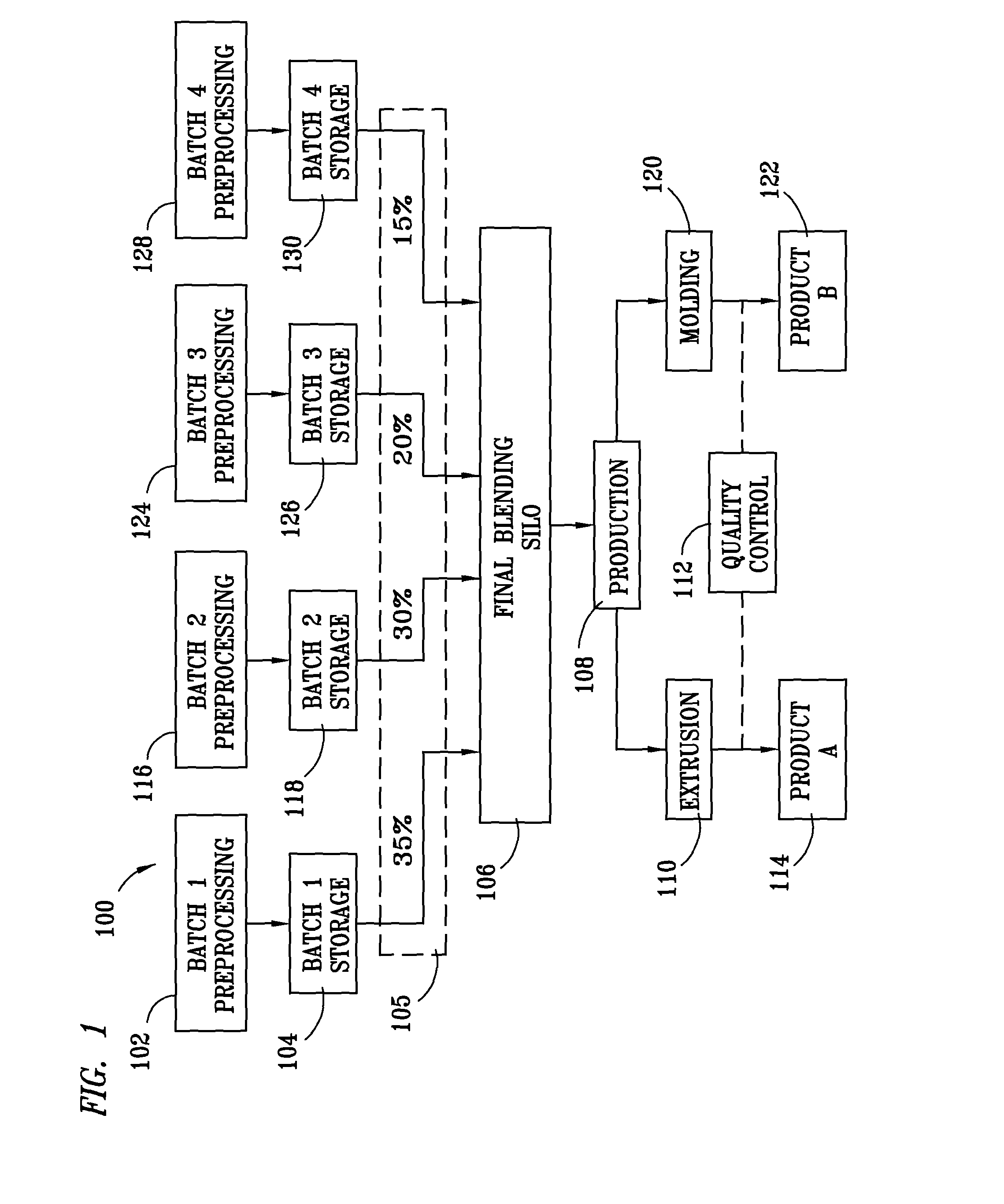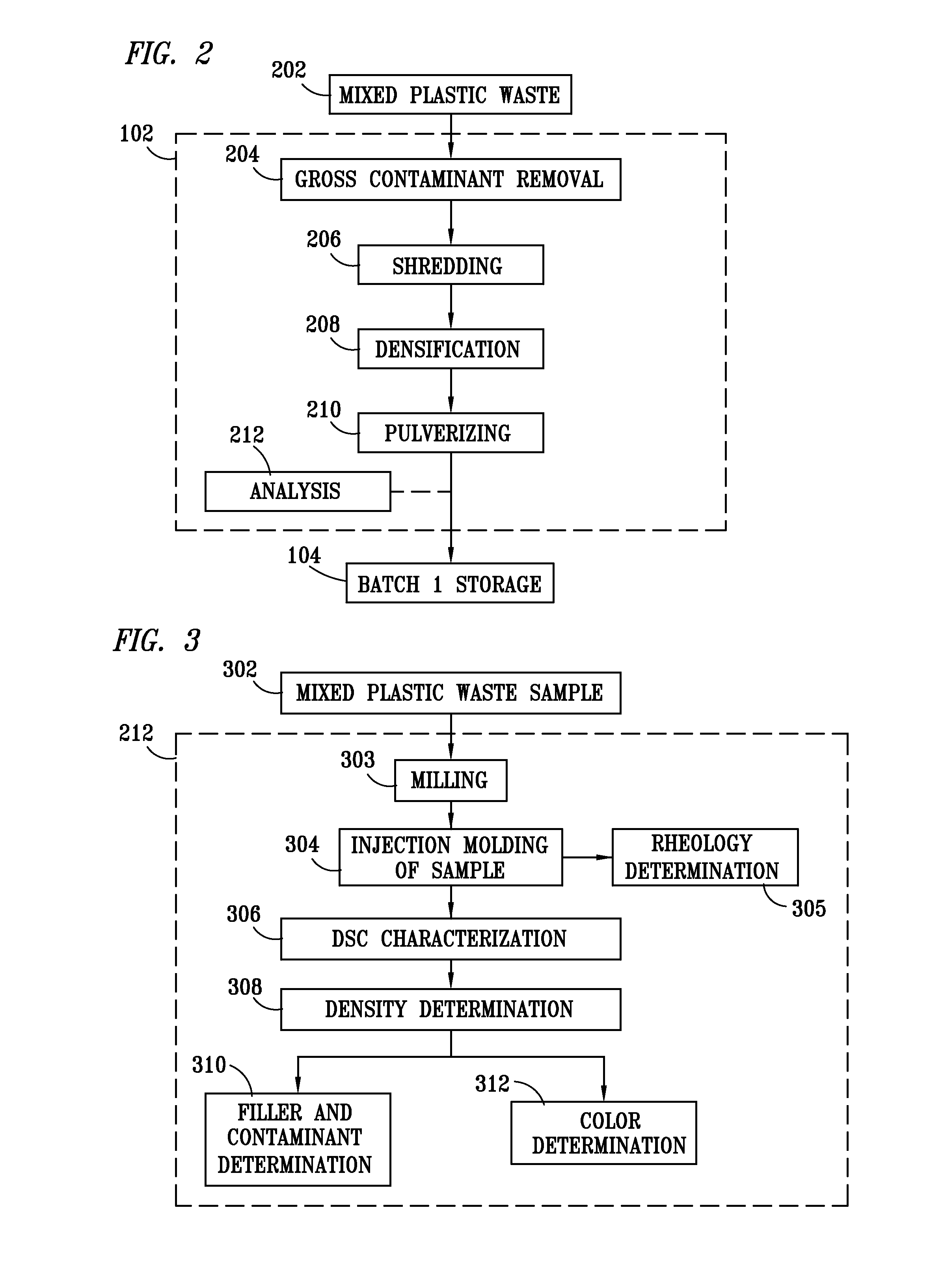Method for processing and analyzing contaminated mixed waste plastics to produce reformulated, blended feed materials having desired physical properties
a technology of mixed waste plastics and contaminated plastics, which is applied in the field of processing and analyzing contaminated mixed waste plastics to produce reformulated, blended feed materials having desired physical properties, can solve the problems of serious problems in raw material processing and manufacturing, production losses through increased downtime and substandard products, and energy requirements, so as to reduce energy requirements and produce new products efficiently.
- Summary
- Abstract
- Description
- Claims
- Application Information
AI Technical Summary
Benefits of technology
Problems solved by technology
Method used
Image
Examples
example 1
DensityMILDPE off spec resin.924LDPE linear board .9242poly densifiedLLDPE Stretch densified.9183HDPE KW Pellet.95.5HDPE Grocery Bags.94.8Density%MIDensityMI Comp.Comp.HDPE10.4.95.4.095LLDPE402.5.9181.0.367LDPE linear board502.9241.0.4622.49.24
example 2
MI DensityMIDensityComp.15% milk jug flake.4-.945.06.1445% LDPE polywaste2.924.90.41640% LLDPE2.918.80.367MIDensityFinal Average1.76.9227
example 3
MI DENSITY CALCULATOR:Lot No.:Date:POLYMERPERCENTMELT INDEXMI COMPDENSITYDEN COMPLDPE23.504.000.940.9250.217LLDPE43.302.000.870.9180.397HDPE13.600.500.070.9240.129LDPE or all19.602-4*0.390.181HydropulpOTHER0.000.000.000FINAL100.002.260.925BLENDACCEPTABLEBLENDSLDPE RANGE0.00-0.801.0-6.00.917-0.925LLDPE RANGE0.00-0.800.5-3.00.915-0.945HDPE RANGE0.10-0.400.1-1.00.945-0.968FINAL BLEND100—1.5-2.5—0.920-0.930RANGEINSTRUCTIONS: Enter MI and Density data from lab reports then adjust percentages of each product until the final blend is 100.00% then the MI and Density of the final blend are shown under the MI Comp and Den Comp columns.*Depends on cupstock or foodboard
PUM
| Property | Measurement | Unit |
|---|---|---|
| particle size distribution | aaaaa | aaaaa |
| density | aaaaa | aaaaa |
| specific gravities | aaaaa | aaaaa |
Abstract
Description
Claims
Application Information
 Login to View More
Login to View More - R&D
- Intellectual Property
- Life Sciences
- Materials
- Tech Scout
- Unparalleled Data Quality
- Higher Quality Content
- 60% Fewer Hallucinations
Browse by: Latest US Patents, China's latest patents, Technical Efficacy Thesaurus, Application Domain, Technology Topic, Popular Technical Reports.
© 2025 PatSnap. All rights reserved.Legal|Privacy policy|Modern Slavery Act Transparency Statement|Sitemap|About US| Contact US: help@patsnap.com



